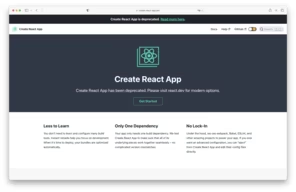非同步程式設計的演進
JavaScript 是一種單線程語言,為了避免長時間運行的操作阻塞用戶界面,非同步程式設計成為必要。在 JavaScript 的發展歷史中,處理非同步操作的方式經歷了三個主要階段:
回調函數 (Callbacks)
最初,JavaScript 透過回調函數處理非同步操作。然而,當處理多個相互依賴的非同步操作時,常常導致所謂的「回調地獄」(Callback Hell),造成程式碼可讀性和維護性的挑戰。
Promises
ES2015 (ES6) 引入了 Promise 物件,提供了一種更結構化的方式來處理非同步操作。Promise 是代表未來會產生值的第一類物件,可以輕鬆地傳遞、組合和轉換。透過 .then() 和 .catch() 方法,它改善了回調地獄的問題,但仍有其局限性。
async/await
ES2017 引入了 async/await 語法,建立在 Promise 的基礎上,提供了更直觀的方式來編寫和理解非同步程式碼。async/await 允許開發者以看似同步的方式編寫非同步程式碼,大大提升了程式碼的可讀性和維護性。
async/await 的基本概念與語法
async/await 由兩個關鍵字組成:
- async:用於宣告一個非同步函數,該函數將始終返回一個 Promise。
- await:只能在 async 函數內部使用,用於暫停函數執行,直到 Promise 解決。
基本語法示例:
async function fetchData(url) {
try {
const response = await fetch(url);
const data = await response.json();
return data;
} catch (error) {
console.error(error);
}
}async/await 相較於 Promises 的優勢
1. 更清晰的程式碼結構與可讀性
async/await 使非同步程式碼看起來與同步程式碼相似,減少了鏈式調用的複雜性,使程式碼更容易閱讀和理解。
使用 Promise:
const makeRequest = () =>
getJSON().then((data) => {
console.log(data);
return "done";
});使用 async/await:
const makeRequest = async () => {
console.log(await getJSON());
return "done";
};這種結構使得程式碼更加線性和直觀,特別是在處理多個非同步操作時。
2. 更自然的錯誤處理
async/await 允許使用傳統的 try/catch 結構來處理同步和非同步錯誤,使錯誤處理更加一致和直觀。
使用 Promise:
const makeRequest = () => {
try {
getJSON().then((result) => {
const data = JSON.parse(result);
console.log(data);
});
} catch (err) {
console.log(err);
}
};使用 async/await:
const makeRequest = async () => {
try {
const data = JSON.parse(await getJSON());
console.log(data);
} catch (err) {
console.log(err);
}
};在 Promise 版本中,try/catch 塊無法捕獲 Promise 內部的錯誤,而在 async/await 版本中,所有錯誤都能被適當捕獲。
3. 更容易的調試體驗
使用 async/await 進行調試比調試 Promises 更加容易。在調試 Promises 時,有兩個主要問題:
- 無法在返回表達式的箭頭函數中設置斷點
- 當使用斷點調試步進功能時,調試器不會移動到下一個 .then 塊,因為它只步進同步程式碼
相比之下,使用 async/await,可以像調試同步程式碼一樣,設置斷點並步進執行非同步操作。
4. 更優雅地處理條件邏輯
async/await 使處理條件邏輯變得更加簡潔。當需要基於前一個非同步調用的結果進行條件操作時,Promise 鏈變得複雜且難以閱讀。
使用 async/await:
const makeRequest = async () => {
const data = await getJSON();
if (data.needsAnotherRequest) {
const moreData = await makeAnotherRequest(data);
console.log(moreData);
return moreData;
} else {
console.log(data);
return data;
}
};這種方式比使用 Promises 的嵌套 .then() 調用更清晰易讀。
5. 更簡單地處理中間值
在需要多個非同步操作並且後續操作依賴前一個操作結果的情況下,async/await 特別有用。
使用 async/await:
const makeRequest = async () => {
const value1 = await promise1();
const value2 = await promise2(value1);
return promise3(value1, value2);
};與嵌套的 Promise 鏈相比,這種代碼結構顯著簡化了複雜的非同步流程。
async/await 的進階特性與效能優化
Top-level await
ES2022 引入了 top-level await,允許在模組頂層使用 await,無需包裝在 async 函數中:
// config.js
const config = await fetch("/api/config");
export default await config.json();AbortController 整合
async/await 可以與 AbortController 完美配合,實現請求取消功能:
const controller = new AbortController();
const { signal } = controller;
const fetchData = async () => {
try {
const response = await fetch("https://api.example.com/data", { signal });
const data = await response.json();
return data;
} catch (error) {
if (error.name === "AbortError") {
console.log("請求已取消");
} else {
throw error;
}
}
};
// 5 秒後取消請求
setTimeout(() => controller.abort(), 5000);async/await 在應用中的效能與擴展性
提升 Web 應用的效能與擴展性
記憶體管理優化
使用 async/await 時,需要注意記憶體管理。以下是一些優化建議:
// 不佳的做法 - 可能導致記憶體洩漏
const processItems = async (items) => {
const results = [];
for (const item of items) {
results.push(await processItem(item));
}
return results;
};
// 優化後的做法 - 使用 for...of 進行迭代
const processItems = async (items) => {
const results = [];
for await (const item of items) {
const result = await processItem(item);
results.push(result);
}
return results;
};
// 更好的做法 - 使用 Promise.all 並控制並發數
const processItemsInBatches = async (items, batchSize = 5) => {
const results = [];
for (let i = 0; i < items.length; i += batchSize) {
const batch = items.slice(i, i + batchSize);
const batchResults = await Promise.all(
batch.map((item) => processItem(item))
);
results.push(...batchResults);
}
return results;
};效能監控
在生產環境中監控 async/await 的效能:
const measureAsyncOperation = async (operation) => {
const start = performance.now();
try {
const result = await operation();
const duration = performance.now() - start;
console.log(`操作完成,耗時:${duration}ms`);
return result;
} catch (error) {
const duration = performance.now() - start;
console.error(`操作失敗,耗時:${duration}ms`, error);
throw error;
}
};在 Web 應用程序中,特別是服務器端應用(如 ASP.NET),async/await 能夠顯著提高應用程序的擴展性。當執行 I/O 密集型操作(如數據庫查詢或 API 調用)時,使用 async/await 可以釋放線程,使其能夠處理其他請求,從而提高整體吞吐量。
更有效地處理多個非同步操作
async/await 與 Promise.all() 結合使用時,可以有效地並行處理多個非同步操作。
const makeRequest = async () => {
const [value1, value2, value3] = await Promise.all([
promise1(),
promise2(),
promise3(),
]);
return processValues(value1, value2, value3);
};2025 年的最佳實踐與注意事項
新的錯誤處理模式
使用新的 Error Cause API 提供更詳細的錯誤信息:
const fetchUserData = async (userId) => {
try {
const response = await fetch(`/api/users/${userId}`);
if (!response.ok) {
throw new Error("獲取用戶數據失敗", {
cause: {
code: response.status,
url: response.url,
userId,
},
});
}
return await response.json();
} catch (error) {
console.error("錯誤詳情:", error.cause);
throw error;
}
};使用結構化並發
const processUserData = async () => {
try {
const results = await Promise.allSettled([
fetchUserProfile(),
fetchUserPosts(),
fetchUserPreferences(),
]);
const [profile, posts, preferences] = results.map((result) =>
result.status === "fulfilled" ? result.value : null
);
return {
profile,
posts,
preferences,
timestamp: new Date(),
};
} catch (error) {
console.error("處理用戶數據時發生錯誤:", error);
throw error;
}
};何時使用 async/await
- I/O 密集型操作,如網路請求、檔案存取和資料庫操作
- 處理複雜的非同步流程和依賴關係
- 需要清晰錯誤處理的情況
何時避免使用 async/await
- CPU 密集型操作可能導致效能下降
- 過度使用可能會不必要地增加複雜性
- 當不需要等待操作完成時,可能不需要非同步處理
常見陷阱
- 忘記在函數前添加 async 關鍵字
- 在非同步函數中忘記使用 await
- 產生不必要的序列化操作,而不是使用 Promise.all() 進行並行處理
結論
async/await 不僅僅是 Promise 的語法糖,而是提供了真正的優勢,使非同步程式碼更具表現力、可讀性和可維護性。它統一了非同步程式設計的經驗,提供了更好的錯誤堆疊追蹤,並允許使用所有同步程式設計中可用的語言結構。
隨著 Web 開發不斷向更複雜的應用演進,掌握 async/await 成為現代 JavaScript 開發者的必備技能。對於需要處理大量非同步操作的專案,使用 async/await 可以顯著提高程式碼質量和開發效率。
雖然 async/await 提供了許多優勢,但理解其底層原理以及與 Promises 的關係仍然重要,這有助於在各種情況下選擇最合適的非同步處理方式。
如果你有 AI 專案、網站開發或技術整合需求,或正在為團隊尋找工程師,歡迎來信交流: partner@calpa.me
歡迎訂閱 Calpa 的頻道,一同將想像力化為可能:

















